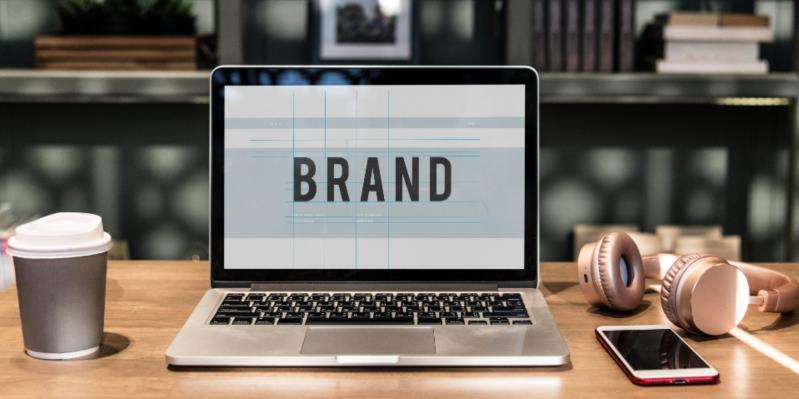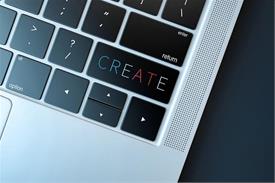5 tips for creating an effective logo design for better branding
In order to succeed in today’s marketplace, companies must find ways to gain an edge over the competition – consumers are now more sophisticated than ever, so businesses that aren’t able to associate trust and quality with their brand are doomed to fail.
Every part of the company’s marketing and product development must be consistent and speak to their target audience because otherwise, it will most likely get lost among its competitors.
And all of that starts with the logo – it will serve as the symbol that customers immediately recognise and associate with the company, building trust and establishing authority in the industry.
But how can you get started with developing a logo for your company that’s in line with your branding goals?
As any brand design agency in London will tell you, the only way to make sure that the logo achieves its goals is to break the process into manageable parts.
Here are a few of the main ideas that you could use to get started on your logo project as soon as today.
Do Your Research
If you want to create a logo that resonates with your target audience, there’s no going around the task of understanding how to make them respond to your design.
The first step is looking at what the competition is doing – by analysing the style, colour scheme, and fonts of their designs, you can get a better idea of the aesthetics that work the best in your field.
Obviously, that doesn’t mean that you should just copy what others are doing, but by analysing multiple logos, you will start to notice trends and patterns, which you can then use as inspiration to create your own design, or maybe find a unique idea that you can use as a differentiating point from everyone else.
Don’t just focus on the logo itself, either – study the entirety of the design elements, including websites, marketing materials, and anything else you can find. You can learn a lot about subtle ways that businesses use to position themselves using visual elements, which you can try and implement yourself.
What is Your Business About?
Your logo is the representation of your company, so you want it to communicate everything you want your company to stand for.
That requires you to look inward and study what your company is all about – what are your core values, how do you want to be perceived, what are your top priorities when running a business, and what makes your business special.
Look at your organisation’s history, its founders, review the most important milestones, and try to come up with a story that shows how the business evolved into what it is today.
People are the most loyal to businesses that they believe in and associate with, so your most important goal is to align yourself with your ideal customers so that they feel like they can trust you.
If you go through this process thoroughly, it will become much easier to develop symbols and design elements that help to tell your story and help communicate your values on their own.
Pick the Right Colour Scheme Carefully
Colours are an integral part of any logo – the associations that humans have with colours are often subconscious, so you need to make sure that the colour scheme of your logo works in your advantage instead of forming the wrong associations in your prospect’s mind.
For instance, while bright colours are a great way to grab attention, they don’t work well for attracting high-end clients, so they’re not a good idea for a law firm. Softer tones produce the opposite result – they may not stand out in the crowd, but they do draw the attention of a more sophisticated buyer that values quality.
There are numerous details that you need to consider, and each colour has its own subtle hints it will be sending the prospect, so you need to think through the choices before committing.
And Font Too…
Font holds similar power as colour – even if all other elements were the same, the simple change of the font could make the logo a resounding success or a complete failure.
The reason why any prominent logo design agency in London can charge premium fees lies in details just like this – professional logo designers know how to pick the perfect font for the text in the logo, which sets up every other detail and makes the logo seamlessly fit in with all of the company’s communications.
But what exactly can you communicate with your fonts?
Well, fonts can be sorted in a few categories, each of which serves a clear purpose – for instance, serif fonts have been around for a while, and signal reliability and trust. Some of the more modern fonts, on the contrary, show the company is daring and stylish. Script fonts are usually elegant and classy, but also show creativity and sleekness.
Just as with colours, it’s important to make sure that you’re able to use your selection of fonts across communications – you don’t need to pick just one, but having a font for headlines and titles, and one for the body of the text is usually enough.
Consider Where You’ll Use It
Throughout your logo design process, you need to always keep in mind that you’re not creating your logo in a vacuum – it will appear on all of your communications and marketing materials, so you need to take into account how it will look on various backgrounds and in multiple formats.
You need the logo to be versatile and easily adaptable to work well on both online and offline materials – it is, after all, the centrepiece of your marketing that will appear on everything that you put out, so it needs to look good no matter where it’s placed.
Related Posts
In the era of high-speed internet, owning a server with a 10Gbps connection offers an unparalleled advantage in terms of data transfer speed, website performance, and user experience.
To make your business successful in the modern age, you need to excel at digital marketing and have a strategy that can allow you to beat out the competition.
In the ever-evolving landscape of digital marketing, link building remains a cornerstone of search engine optimization (SEO).
In today's age, establishing an online brand presence is crucial for success. With the vast reach and accessibility of the internet, launching your brand online can open up endless opportunities for growth and expansion.
Ecommerce marketing relies heavily on understanding consumer behavior and psychology to drive engagement, conversions, and loyalty.
In the world of interior design, ambiance is everything. From the cozy warmth of a rustic farmhouse to the sleek sophistication of a modern penthouse, decor plays a pivotal role in setting the mood and personality of a space.













Comments
comments powered by Disqus